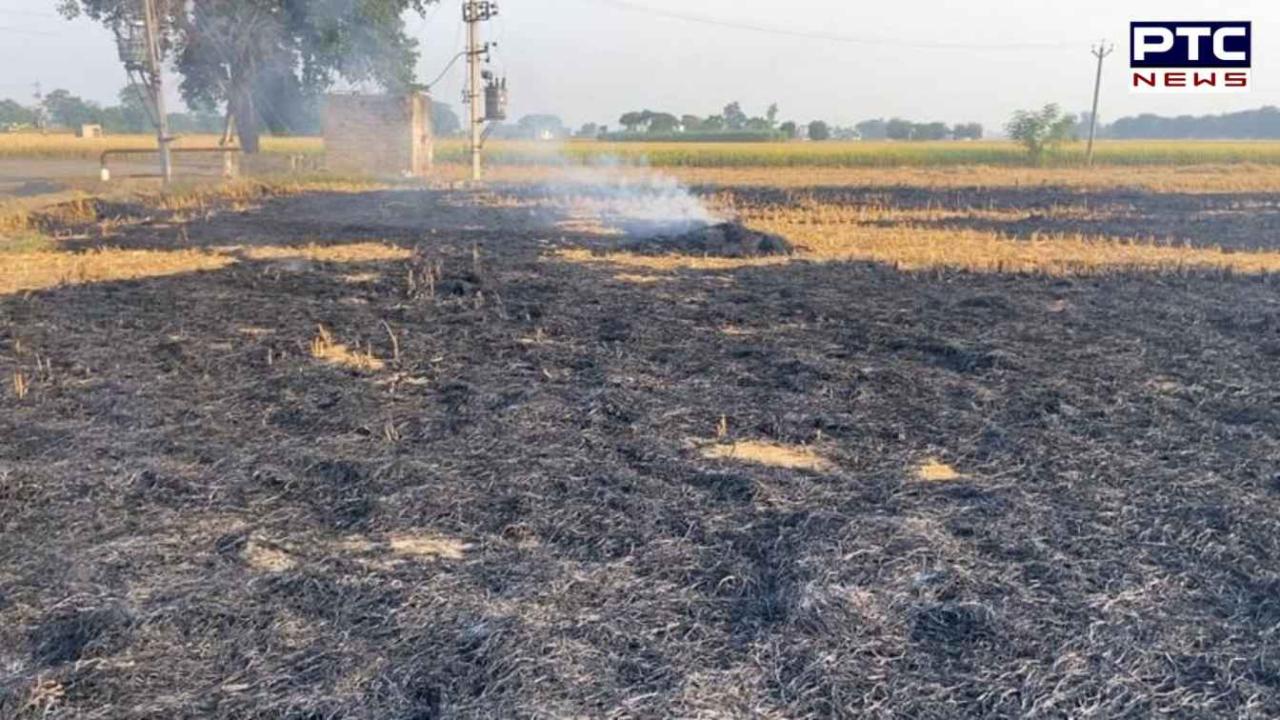Stubble burning persists in Punjab: Farmers defy FIRs as proposed solutions fall short
As of October 17, 83 instances of stubble burning were detected by satellite, according to the Punjab Remote Sensing Centre in Ludhiana.

PTC News Desk: The journey from Delhi to Nabha in Patiala was filled with stops, each an attempt to engage with those involved in stubble burning. However, farmers were hesitant—either unavailable or unwilling to speak on camera—deepening the question: why does stubble burning persist in 2024 despite fines and FIRs? Is it truly the only option, or simply the most convenient?
As we approached Nabha, smoke in the distance—an unmistakable sign of stubble burning in Punjab—caught our attention. Arriving at a nearby field, our suspicions were confirmed.
Exercising caution, we asked permission to film the scene, which was granted by the farmer. He also warned us about the health hazards of the smoke. When asked why he continued to burn stubble despite the known risks, the farmer replied in Punjabi, “How else will the next crop be sown if we don’t set fire?” This statement encapsulates the core of the issue: farmers see stubble burning as the quickest and easiest way to clear their fields for the next crop cycle.
Data from the Punjab Remote Sensing Centre in Ludhiana revealed that satellite detection recorded 83 incidents of stubble burning as of October 17. This year, Punjab has witnessed approximately 1,300 cases so far. While this number may seem low compared to previous years, experts emphasise that the impact depends on various factors, such as the size of the area burned and wind direction.
Jagdeep Singh, the owner of the field we visited, gave an honest account of the farmers’ frustration. “Every year, people like you come, record us, and leave. Nothing changes, and nothing will change,” he said, expressing his disillusionment with the system. He explained that government-subsidised machines aren’t a viable solution for most farmers. “We cannot afford the machines even with the subsidy. The factories that were supposed to take our paddy never reach out or demand payment,” Singh added, highlighting the broken promises of industrial solutions.
Also Read: Karwa Chauth 2024: 5 key rules for healthy fasting and hydration you need to follow
Singh also downplayed the environmental impact of stubble burning, claiming that the smoke dissipates quickly and does not contribute significantly to pollution in Delhi. “This smoke will vanish in a few minutes. They are fooling us by saying it reaches Delhi and causes pollution,” he said. While the smoke did seem to dissipate quickly in the field, this perception requires further examination, especially regarding the long-term environmental effects.
Not far from the burning field, we met Harmer Singh, a local farmer leader. In a 40-minute conversation, Harmer described the challenges farmers face, stressing that they are willing to explore alternatives if they are viable. Pointing to a nearby field where potato sowing was underway, he explained the timeline: “He burned the stubble 15 days ago, and now he is sowing potatoes. Those burning today will wait another 12 to 15 days. Do you think it’s as easy as the government claims?”
Harmer echoed concerns about the machinery and subsidies, suggesting an alternative solution: “We asked the government to pay us Rs 200 per quintal to accumulate and send the residue to them, but they think that’s too much of a benefit for us.” He also dismissed the Pusa Decomposer, a microbial solution promoted by the government, as ineffective, claiming it brings insects to the next crop. “No FIR can stop this because a farmer cannot afford to waste time or lose a crop,” Harmer said, pointing out the economic pressures.
Harmer and other farmers also highlighted a dilemma: the Pusa-44 rice variety they are asked to avoid is the one buyers demand. The suggested alternatives have no market.
For farmers, stubble burning remains an easy and viable option. While they would prefer to move away from this practice, they feel that none of the alternatives work in practice.
Meanwhile, Delhi’s Air Quality Index (AQI) has already fallen into the poor category, prompting the Supreme Court to question states like Haryana and Punjab about their efforts to combat pollution. Despite government responses citing alternative solutions, on-the-ground realities suggest the stubble burning problem will continue to be a major challenge this season.
Also Read: Chargesheet reveals Rs 25 lakh contract for Salman Khan hit linked to AK-47 smuggling from Pakistan
